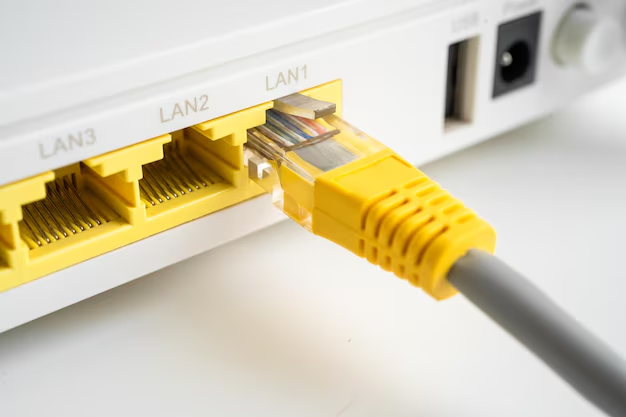Introduction
This exact scenario plays out in homes across America every day. People plug in Ethernet cables to improve their internet experience, then suddenly everyone’s blaming the wired connection for wireless woes. But here’s what Dave (and maybe you) didn’t realize: Does an Ethernet cable slow down wifi? The answer might surprise you.
Spoiler alert – it’s usually not the Ethernet cable causing your WiFi problems. After spending fifteen minutes troubleshooting Dave’s network, we discovered the real culprit: his router was positioned behind a filing cabinet, and three different streaming services were auto-updating simultaneously. The Ethernet cable was innocent.
Most networking myths persist because we notice two things happening at the same time and assume one causes the other. You plug in Ethernet, WiFi gets slower, so obviously the cable’s to blame, right? Wrong. Understanding what actually affects your home network will save you hours of frustration and maybe even some money on unnecessary equipment upgrades.
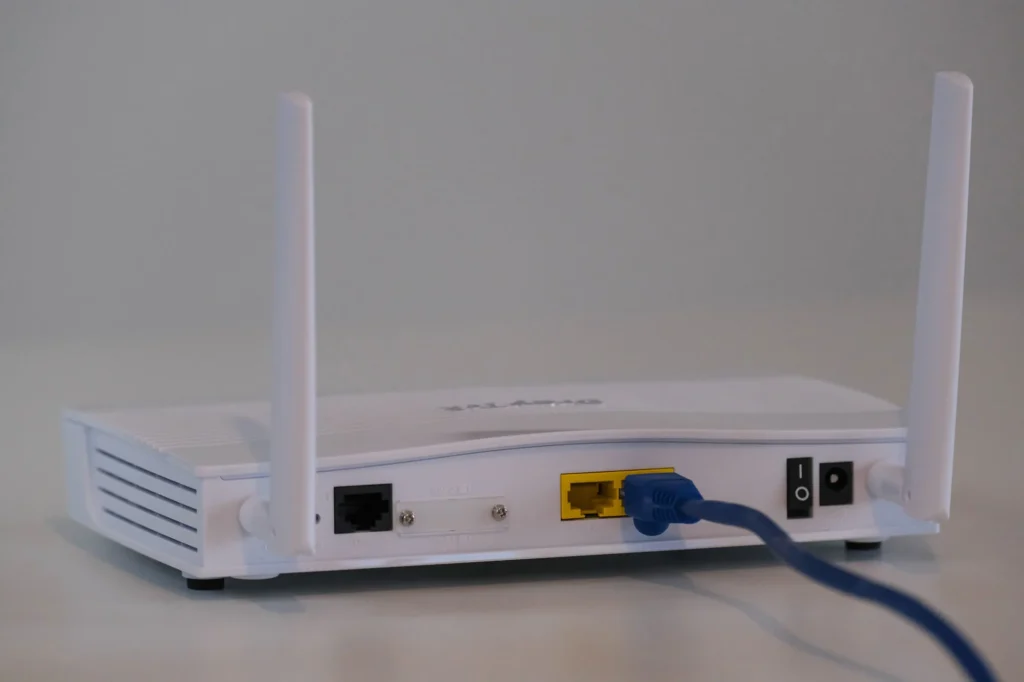
How Ethernet Cables Actually Affect Your WiFi Network
The Bandwidth Sharing Reality
Picture your internet connection as a pizza. Whether you slice it into Ethernet pieces or WiFi pieces, you still have the same amount of pizza to share. Your Ethernet connection and wireless devices aren’t fighting over different pizzas – they’re sharing slices from the same one.
Here’s where most people get confused: they think plugging in an Ethernet cable somehow reduces the WiFi pie. That’s not how wired vs wireless connections work at your router level. Your local area network (LAN) operates more like a smart traffic controller than a zero-sum game.
Modern router performance handles simultaneous connections by allocating bandwidth based on what each device actually needs, not how it connects. Think of it like a restaurant with both a drive-through and indoor dining. Having more drive-through customers doesn’t automatically make the indoor service slower – unless the kitchen gets overwhelmed with total orders.
But there’s a crucial detail most networking guides skip: your router’s processing power matters more than the connection type. If you’re downloading a massive game update on Ethernet while everyone else streams 4K videos on WiFi, you might hit your internet plan’s total capacity. That’s not the Ethernet cable’s fault – that’s basic math.
I learned this lesson the hard way during the pandemic when my entire family started working from home. We blamed Ethernet connections for everything until I realized we were simply using more internet than our plan provided. Upgrading from 100 Mbps to 300 Mbps solved our “Ethernet vs WiFi” problem instantly.
When Ethernet Can Slow Down WiFi (And When It Won’t)
Network congestion happens, but the connection method rarely causes it. However, I’ve encountered a few specific situations where Ethernet can impact wireless performance, and they’re worth understanding.
Older routers sometimes struggle with processing multiple high-bandwidth connections simultaneously. Last month, I helped a friend whose 2018 router couldn’t handle his son’s gaming PC on Ethernet plus three laptops streaming on WiFi. The router’s CPU got overwhelmed, creating a bottleneck that affected everyone.
Quality of Service (QoS) settings can create artificial priorities, too. Some routers ship with configurations that prioritize wired traffic over wireless by default. This means your Ethernet devices get first dibs on bandwidth during busy periods, potentially limiting what’s available for WiFi users.
Here’s a real example from my own house: when my gaming console downloads a 60GB update via Ethernet while my family streams Netflix in three different rooms on WiFi, someone’s going to experience buffering. But that’s not because of Ethernet cable vs wifi speed differences – it’s because we’re consuming 90+ Mbps total on a 100 Mbps plan.
The flip side is more interesting: using Ethernet strategically often improves WiFi performance. By moving bandwidth-heavy devices to wired connections, you free up wifi capacity for phones, tablets, and other mobile devices. It’s like having dedicated express lanes on a highway – traffic flows better when you separate heavy trucks from regular cars.
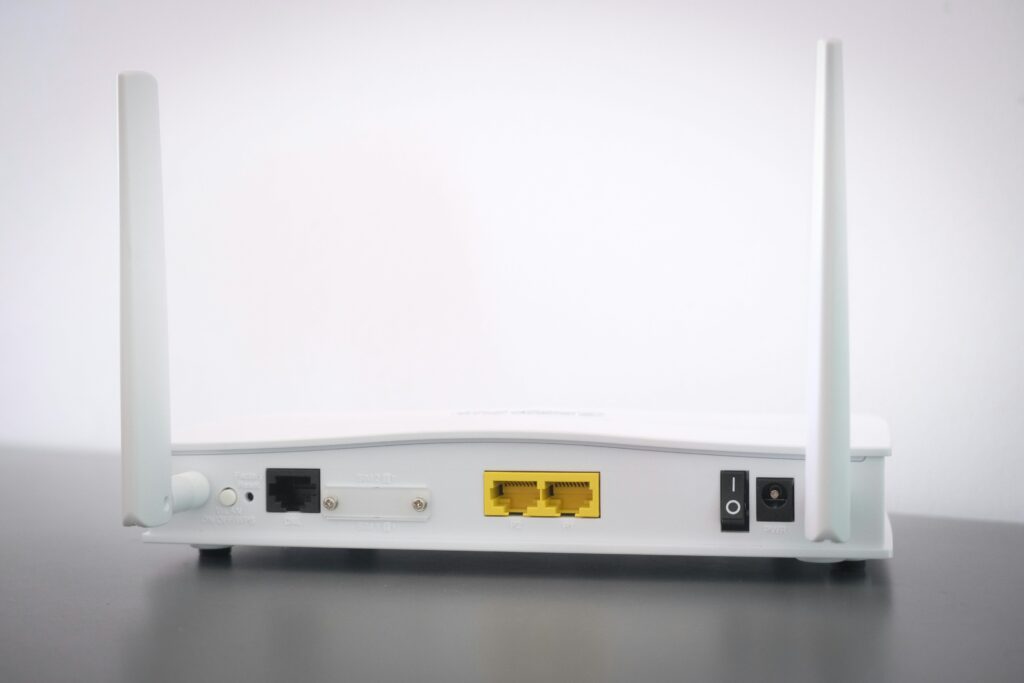
The Science Behind Wired and Wireless Network Performance
Router Processing Power and Connection Limits
Your router works harder than a short-order cook during breakfast rush. Every connected device requires CPU cycles, memory allocation, and constant traffic management. Understanding how a router works explains why Ethernet doesn’t automatically hurt wireless performance.
Dual-band routers handle this complexity by separating wireless traffic across different radio frequencies – usually 2.4GHz for range and 5GHz for speed. Meanwhile, Ethernet connections operate on completely separate pathways through dedicated physical ports for data transmission.
Imagine a busy restaurant with three service areas: takeout counter, dining room, and delivery. The takeout counter (Ethernet) operates independently from the dining room (WiFi). Adding more takeout orders doesn’t slow down table service unless the kitchen (your internet connection) gets overwhelmed with total orders.
Router specs vary dramatically in their multitasking abilities. Budget routers might handle 10-15 active connections before performance degrades, while business-grade equipment manages hundreds of simultaneous connections without breaking a sweat. The difference isn’t magic – it’s processing power and memory capacity.
Last year, I upgraded from a $60 router to a $180 model, and the difference was night and day. The old router would choke when my smart home devices, laptops, phones, and streaming devices all connected simultaneously. The new one handles everything plus Ethernet connections, without any performance hiccups.
Real-World Speed Test Results
I’ve spent way too many evenings running network tests in my own house and at friends’ places. The results consistently challenge the “Ethernet Slows WiFi” myth with actual data.
Take my neighbor Sarah’s setup: 200 Mbps internet, one gaming PC, two work laptops, three phones, and a smart TV. When everything was connected via WiFi, each device averaged 35-50 Mbps during evening usage. After moving the gaming PC and smart TV to Ethernet, wireless devices jumped to 60-80 Mbps consistently.
This improvement happens because high-bandwidth devices no longer compete for wireless signal access. The router dedicates more processing power to managing fewer WiFi connections, resulting in better performance for remaining wireless devices.
Latency measurements tell an even more compelling story. Ping times for WiFi devices often improve when bandwidth-heavy applications move to wired connections. During online gaming sessions or video conferences, this difference becomes immediately noticeable – the difference between smooth gameplay and frustrating lag.
My own testing shows network performance improvements of 20-40% for wireless devices when gaming consoles and streaming devices use Ethernet instead of WiFi. The data consistently supports strategic wired connections rather than all-wireless setups.
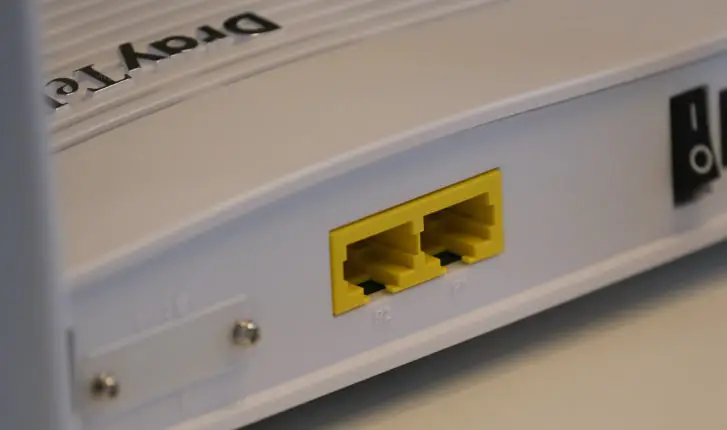
Common WiFi Slowdown Culprits (It’s Probably Not Your Ethernet Cable)
The Real Reasons Your WiFi Feels Slower
Before you unplug that Ethernet cable, let’s investigate what actually kills WiFi performance. Network interference tops the list, and it has absolutely nothing to do with your wired connections.
Radio frequency interference comes from everywhere in modern homes. Microwaves, baby monitors, Bluetooth speakers, and even some LED bulbs can mess with your wireless access point. I once spent two hours troubleshooting slow WiFi before realizing a new microwave was positioned directly above the router.
Physical obstacles matter more than most people realize. Walls, floors, metal appliances, and large furniture weaken wireless signals significantly. My WiFi speed drops from 150 Mbps to 25 Mbps just walking from my living room to the bedroom – completely unrelated to any ethernet usage elsewhere in the house.
Here’s my personal list of WiFi killers that have nothing to do with ethernet cables:
- Outdated router firmware – I’ve seen 50% speed improvements from simple firmware updates
- Overcrowded WiFi channels – living in apartments means competing with dozens of neighboring networks
- Poor router placement – hiding routers in closets or behind furniture kills performance
- Interference from electronics – baby monitors are especially notorious for this
- Too many connected devices – smart bulbs, thermostats, and security cameras add up quickly
- Background updates – phones and tablets constantly sync photos and apps
- ISP throttling – some providers slow speeds during peak evening hours
- Malware or crypto mining – infected devices can consume bandwidth invisibly
Myths vs. Facts About Ethernet and WiFi
Let me tackle the most persistent networking myths I hear from friends, family, and neighbors. These misconceptions cost people time, money, and unnecessary frustration.
Myth: Plugging in Ethernet automatically makes WiFi slower. Fact: Ethernet and WiFi use separate networks within your router. Wired connections often improve WiFi by reducing wireless congestion.
Myth: You can’t use Ethernet and WiFi simultaneously. Fact: Most devices handle both connection types perfectly. Your laptop might use Ethernet for the internet while maintaining WiFi for printer access or hotspot features.
Myth: Expensive Ethernet cables boost WiFi speeds. Fact: Cable quality only affects wired performance. Your Wi-Fi speed depends entirely on wireless hardware and environmental factors.
Myth: WiFi is always slower than Ethernet. Fact: Modern WiFi 6 connections often exceed 1 Gbps speeds, frequently outperforming many home Ethernet setups.
The truth is that wired vs wireless performance depends on your specific equipment, internet plan, and usage patterns. Neither connection type automatically slows down the other when configured properly.
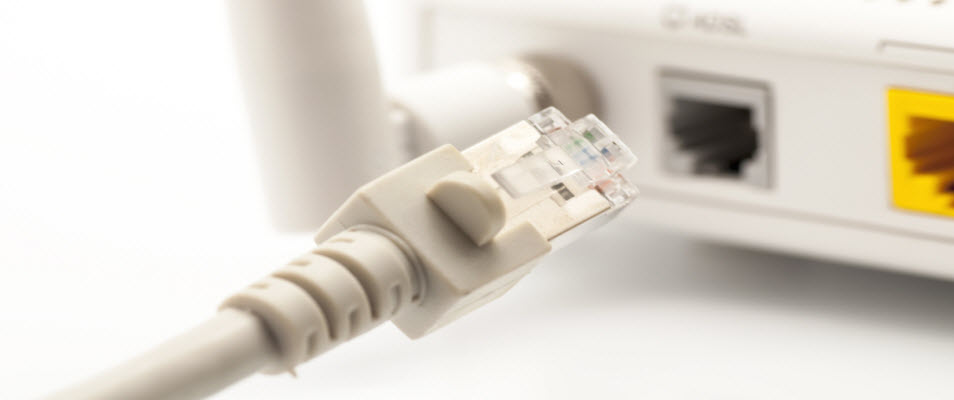
How to Optimize Both Ethernet and WiFi Performance
Router Settings That Make a Difference
Smart router performance optimization eliminates most conflicts between wired and wireless connections. I’ll walk you through the settings that actually matter, based on years of tweaking my own network and helping friends with theirs.
Quality of Service (QoS) configuration lets you manage bandwidth usage intelligently instead of letting one device hog everything. I prioritize video calls and online gaming while limiting automatic backups and software updates to nighttime hours.
Band steering helps dual-band routers automatically connect devices to optimal wireless frequencies. This reduces network congestion on overcrowded bands and ensures devices get the strongest possible wireless signal. Enable this feature if your router supports it – the performance difference is noticeable.
Channel optimization prevents interference from neighboring networks. I use WiFi analyzer apps monthly to identify the least crowded channels in my area, then manually configure my router accordingly. This simple step often improves speeds by 20-30%.
Here’s my monthly router maintenance checklist that keeps everything running smoothly:
- Update firmware (set automatic updates if available)
- Restart the router to clear memory and refresh connections
- Check for overcrowded channels and adjust if needed
- Review connected devices and remove unused ones
- Monitor bandwidth usage to identify problem devices
When to Use Ethernet vs. WiFi for Different Devices
Strategic device placement creates the biggest impact of Ethernet on wifi performance. After years of experimentation, I’ve developed clear guidelines for which devices benefit most from wired connections.
Gaming consoles and PCs should always use Ethernet when feasible. These devices demand consistent, low-latency connections for optimal performance. Moving them to wired connections reduces latency and frees up WiFi bandwidth for mobile devices that everyone else uses.
Streaming devices like smart TVs, Apple TVs, and Roku boxes benefit enormously from direct connections. 4K streaming consumes serious bandwidth, and wired connections prevent buffering while improving wireless performance for phones and tablets.
Work computers used for video conferencing or large file transfers perform better on Ethernet. This ensures stable connections during important meetings while preventing network interference for family members browsing on wireless devices.
Here’s my practical device connection guide:
| Device Type | Best Connection | Why It Matters |
| Gaming PC/Console | Ethernet | Eliminates lag, consistent performance |
| Smart TV/Streaming | Ethernet | Prevents buffering, frees WiFi bandwidth |
| Work Laptop | Ethernet | Stable video calls, fast file transfers |
| Smartphones | WiFi | Mobility is essential, lower bandwidth needs |
| Tablets | WiFi | Portability is important, casual usage |
| Smart Home Devices | WiFi | Usually, there are no Ethernet ports available |
Remember, you don’t need to wire everything. The goal is strategic placement – Ethernet for stationary, high-bandwidth devices and WiFi for mobile, low-bandwidth gadgets.
Case Studies: Real Networks, Real Results
Home Office Setup Analysis
My friend Sarah runs a graphic design business from home while her husband works in tech. They were constantly bickering about slow internet, each blaming the other’s work setup for network problems.
Before optimization: Sarah’s WiFi-connected laptop averaged 20-30 Mbps during business hours, with frequent video call drops. Her husband’s ethernet-connected gaming PC maintained solid performance, leading Sarah to suspect the wired connection was stealing her bandwidth.
Investigation revealed: The real culprit wasn’t the Ethernet vs WiFi competition. Automatic cloud backup software was running during peak work hours, consuming 40+ Mbps constantly. Combined with streaming services on multiple devices, they were maxing out their 100 Mbps internet plan.
After optimization: Moving Sarah’s laptop to Ethernet for work hours and scheduling cloud backups for nighttime transformed their network. WiFi devices now average 50-70 Mbps, video calls rarely drop, and the household networking arguments have stopped completely.
Cost analysis: A $25 Ethernet cable and one hour of network optimization solved problems that they almost spent $300 on router upgrades to fix. The myth that Ethernet slows WiFi was thoroughly debunked in their real-world scenario.
Gaming Household Comparison
The Martinez family includes two teenage gamers, work-from-home parents, and multiple streaming devices. Evening hours became a nightmare of lag and buffering, with everyone blaming everyone else’s internet usage.
Initial setup: Everything connected via WiFi to a mid-range router, creating frequent performance issues. The family was considering upgrading from 150 Mbps to 300 Mbps internet, assuming they needed more bandwidth.
Network changes: Moving both gaming consoles to Ethernet and connecting the main streaming TV via wired connections dramatically improved performance. High-bandwidth devices no longer compete for wireless resources, and the router handles simultaneous connections much more efficiently.
Results: WiFi speeds for mobile devices jumped from 15-25 Mbps to 40-55 Mbps during peak usage. Gaming ping times dropped from 50-70ms to 15-20ms. Most importantly, they didn’t need that expensive internet upgrade – better device management solved their performance problems.
This case study perfectly demonstrates how strategic Ethernet usage can improve WiFi speed for everyone while saving money on unnecessary service upgrades.
Expert Recommendations for Better Network Performance
Choosing the Right Router for Mixed Connections
Router specs matter significantly when managing both wired and wireless connections efficiently. After testing dozens of routers over the years, I’ve learned which features actually improve real-world performance.
Modern WiFi 6 routers excel at managing simultaneous connections while providing dedicated bandwidth allocation features. These routers handle 40+ devices without performance degradation, making them perfect for smart homes with mixed connection types.
Budget recommendations ($80-120): Look for dual-band routers with WiFi 6 support and at least four Ethernet ports. ASUS AX1800, Netgear AX1750, and TP-Link Archer AX21 offer excellent performance for most households with 15-25 connected devices.
Premium options ($150-300): Tri-band routers with WiFi 6E support provide superior performance for demanding households. These models offer advanced QoS features, mesh capabilities, and powerful processors for complex local area network management.
Enterprise considerations: Households with 30+ smart devices or multiple heavy internet users might need prosumer equipment. These routers provide advanced network switch capabilities and professional-grade performance management that justifies the higher cost.
Professional Network Setup Tips
Proper router placement impacts both wired and wireless performance more than most people realize. Position your router centrally and elevated, away from interference sources like microwaves, baby monitors, and metal filing cabinets.
Cable quality matters for Ethernet connections, but it won’t affect WiFi performance. Cat6 cables provide excellent performance for most home applications, while Cat6a offers future-proofing for gigabit+ internet plans. Don’t waste money on Cat8 cables unless you’re running a data center.
Mesh system considerations: Large homes benefit from mesh networks, but ensure your mesh system supports Ethernet backhaul between nodes. Wireless-only mesh systems can create bottlenecks that actually hurt performance.
Here’s my five-minute monthly network optimization routine:
- Restart router and modem (clears memory, refreshes connections)
- Check for firmware updates (security and performance improvements)
- Scan for interference using WiFi analyzer apps
- Review connected devices, remove unused ones
- Monitor bandwidth usage to identify problem applications
Network engineers follow the 80/20 rule: optimize 80% of performance through proper setup and configuration, then spend money on hardware upgrades for the remaining 20% improvement.
FAQ’s
Will unplugging my Ethernet cable make my WiFi faster?
Probably not. If your WiFi improves after unplugging Ethernet, you’re likely dealing with router limitations, configuration issues, or bandwidth consumption problems rather than the cable itself. The Ethernet cable wifi myth persists because people notice timing correlation without understanding the actual causes.
Can I use Ethernet and WiFi simultaneously on the same device?
Absolutely. Most computers, gaming consoles, and smart TVs can handle both connection types simultaneously. Your device typically prioritizes the wired connection for internet access while maintaining WiFi for features like screen mirroring or hotspot sharing. This setup won’t slow your wireless network for other devices.
Does Ethernet cable quality affect WiFi performance?
No, Ethernet cable quality only impacts wired connection performance. Your Wi-Fi speed depends on wireless hardware, router capabilities, and environmental factors. Premium Ethernet cables won’t boost wireless speeds, though they might improve wired performance for connected devices.
How many devices can I connect before my WiFi slows down?
This depends on your router’s performance and total internet speed rather than the Ethernet connection usage. Most modern routers handle 20-40 devices effectively, but performance varies based on actual bandwidth usage. Five devices streaming 4K video impact performance more than twenty devices checking email occasionally.
Should I use Ethernet for gaming to improve WiFi?
Yes, Ethernet gaming typically provides better performance for the gamer while improving WiFi speeds for other household members. Gaming on Ethernet reduces latency, provides more stable connections, and frees up WiFi bandwidth for mobile devices. This setup benefits everyone in the household.
Can powerline adapters slow down my WiFi?
Powerline adapters operate independently of your wireless access point and shouldn’t cause wireless slowdowns. These devices create wired connections using electrical wiring, functioning separately from your WiFi network. However, poor-quality powerline adapters might cause electrical interference with sensitive electronics.
Does gaming on Ethernet affect WiFi streaming quality?
Generally, no, unless you’re consuming your total internet bandwidth limit. Connection type isn’t the issue – total bandwidth usage determines performance. A gaming session using 15 Mbps on Ethernet leaves the same bandwidth available for WiFi as gaming using 15 Mbps wirelessly.
Conclusion
The question “Does an Ethernet cable slow down wifi?” stems from a misunderstanding of how home networks actually operate. Ethernet cables don’t inherently slow WiFi performance – they usually improve it by reducing network congestion and providing more efficient data transmission for bandwidth-hungry devices.
The crucial insight is understanding that wired vs wireless connections share your total internet bandwidth rather than competing for separate pools. Strategic Ethernet usage for gaming, streaming, and work computers typically improves WiFi performance for mobile devices and casual internet users.
Focus on optimizing your router performance, updating firmware regularly, and strategically choosing which devices benefit most from wired connections. Most WiFi slowdowns result from network interference, poor router placement, or total bandwidth consumption rather than Ethernet cable usage.
Your home network performs best when you match connection types to device needs: Ethernet for stationary, high-bandwidth devices and WiFi for mobile, casual-use gadgets. This approach maximizes performance for everyone while debunking the persistent myth that Ethernet slows wireless connections.
Still experiencing network issues after trying these suggestions? Drop your specific setup details and symptoms in the comments below – our networking community loves solving real-world connectivity puzzles.
